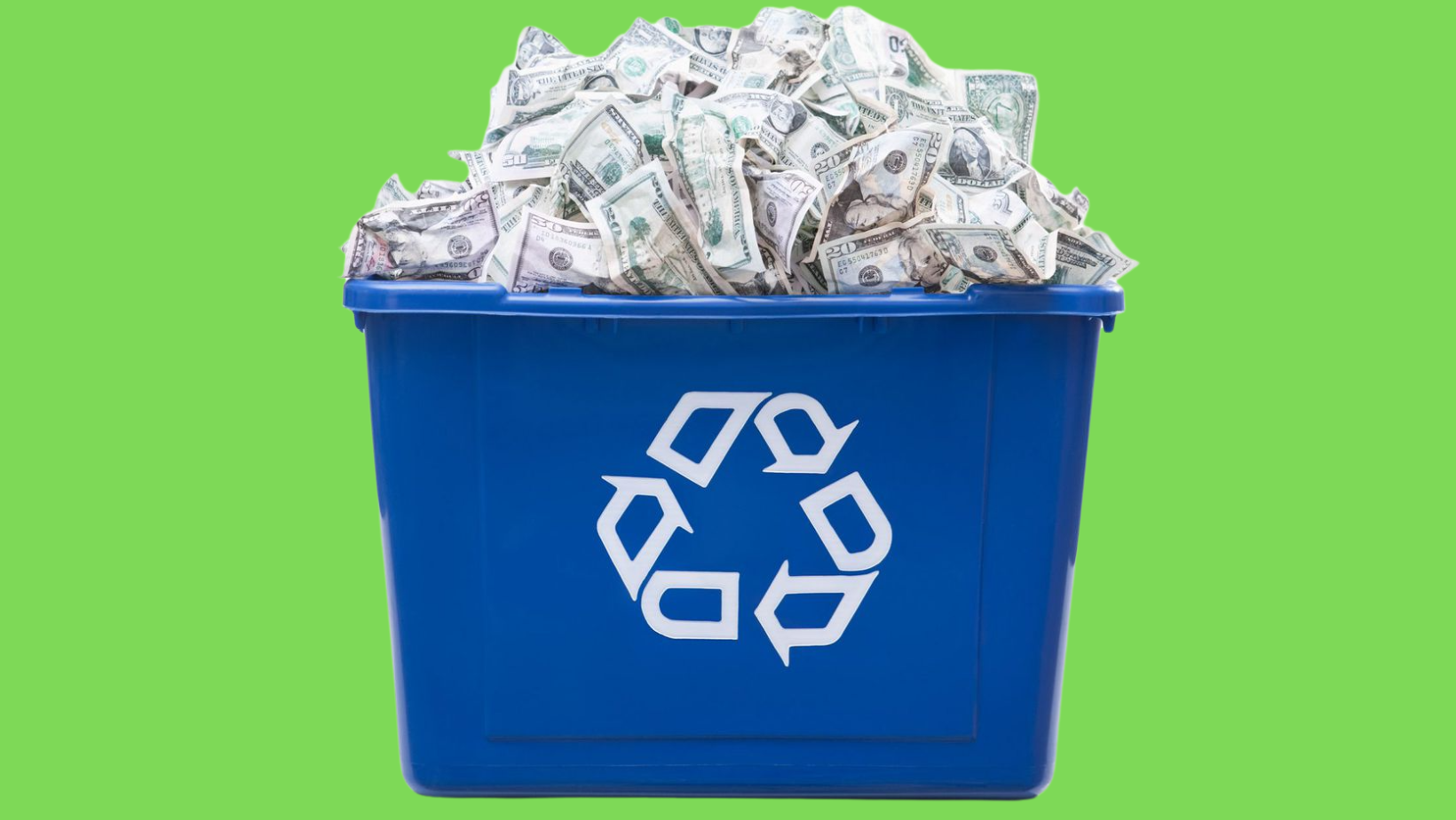
From leftover food to off-premise packaging, restaurants generate a lot of waste. Just one full-service restaurant can create over 2,000 pounds of waste a week. Upping your recycling game can not only reduce waste disposal costs but can have a significant impact on your bottom line.
Greening up your restaurant by setting up a recycling program can not only help save you money, but because you’ll be doing your part in helping to save the planet, it can help to promote a sustainable image to your customers.
With so much focus on sustainability these days, you really can’t do too much to paint an eco-concerned picture of your restaurant. According to Forbes Magazine, millennials prefer to buy from brands with transparent messages, sustainable practices, and social responsibility. Make that connection with this group of consumers by reducing your restaurant’s carbon footprint by creating a recycling strategy for your business. Think of it as yet another great way to better serve your customers.
With just a pinch of creativity and a dash of dedication, you have all the ingredients you need to add a recycling program to your restaurant’s menu in no time at all. We’ve put together a list of tips and strategies to help you get cooking.
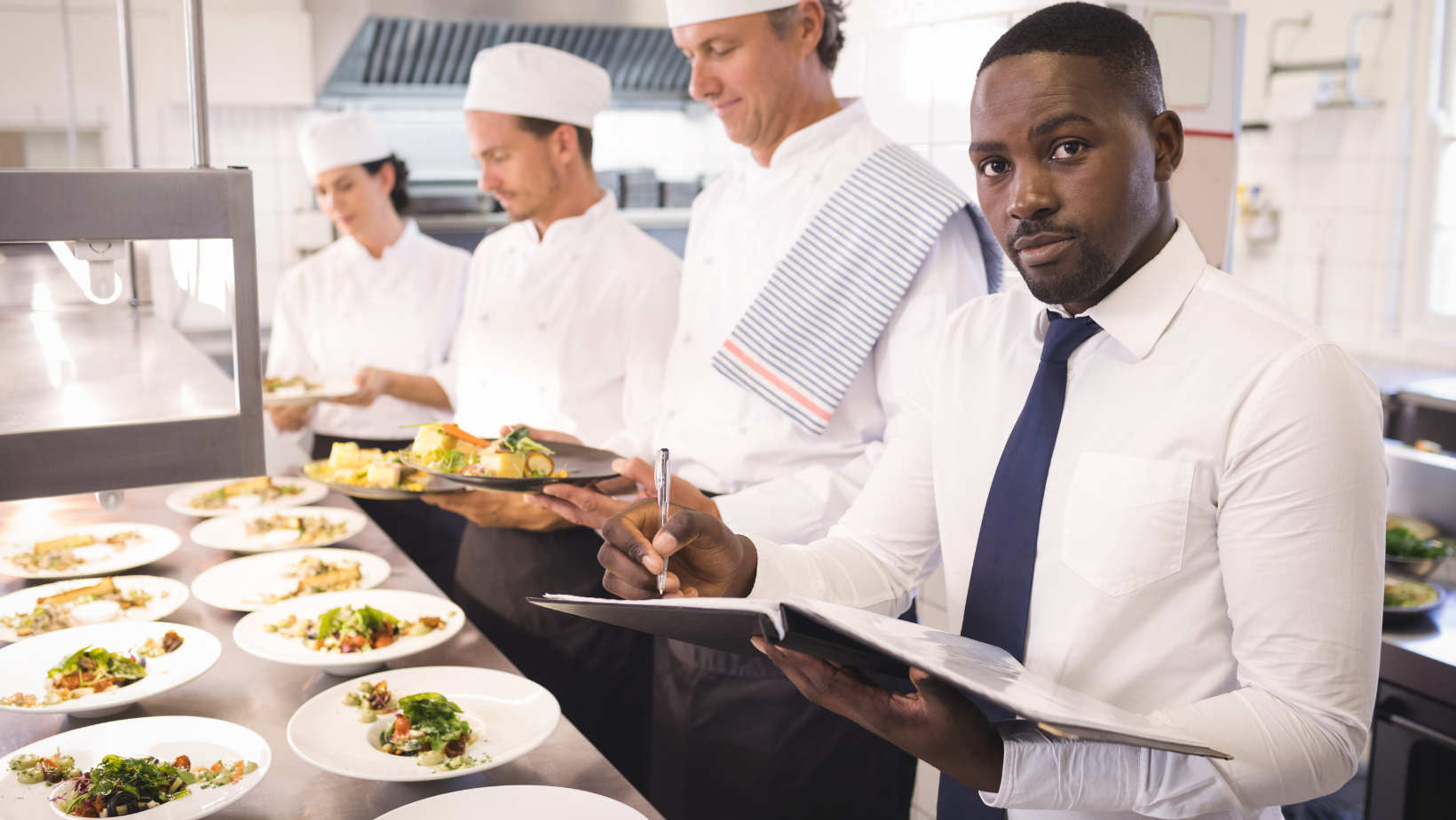
Conduct a Waste Audit
Conducting a thorough waste audit is critical to help you gain a better understanding of where your business is in terms of waste management because you can’t manage what you don’t measure. A waste audit will also help you identify problems and spot areas that need improvement.
Know what materials can be recycled
Before you begin your restaurant’s recycling program, find out what materials your current waste management provider recycles and how they need to be separated.
Most accepted recyclables are made of aluminum, steel, paper, and cardboard. Plastic products, like bottles, jars, and jugs, can also be recycled, but plastic bags and items made of Styrofoam aren’t often collected by recycling facilities since they can be difficult to recycle into new material. If your collector does not take aluminum or steel cans, investigate your local area for businesses that will buy them instead. While glass items can be recycled, it’s important to check if they need to be sorted by color.
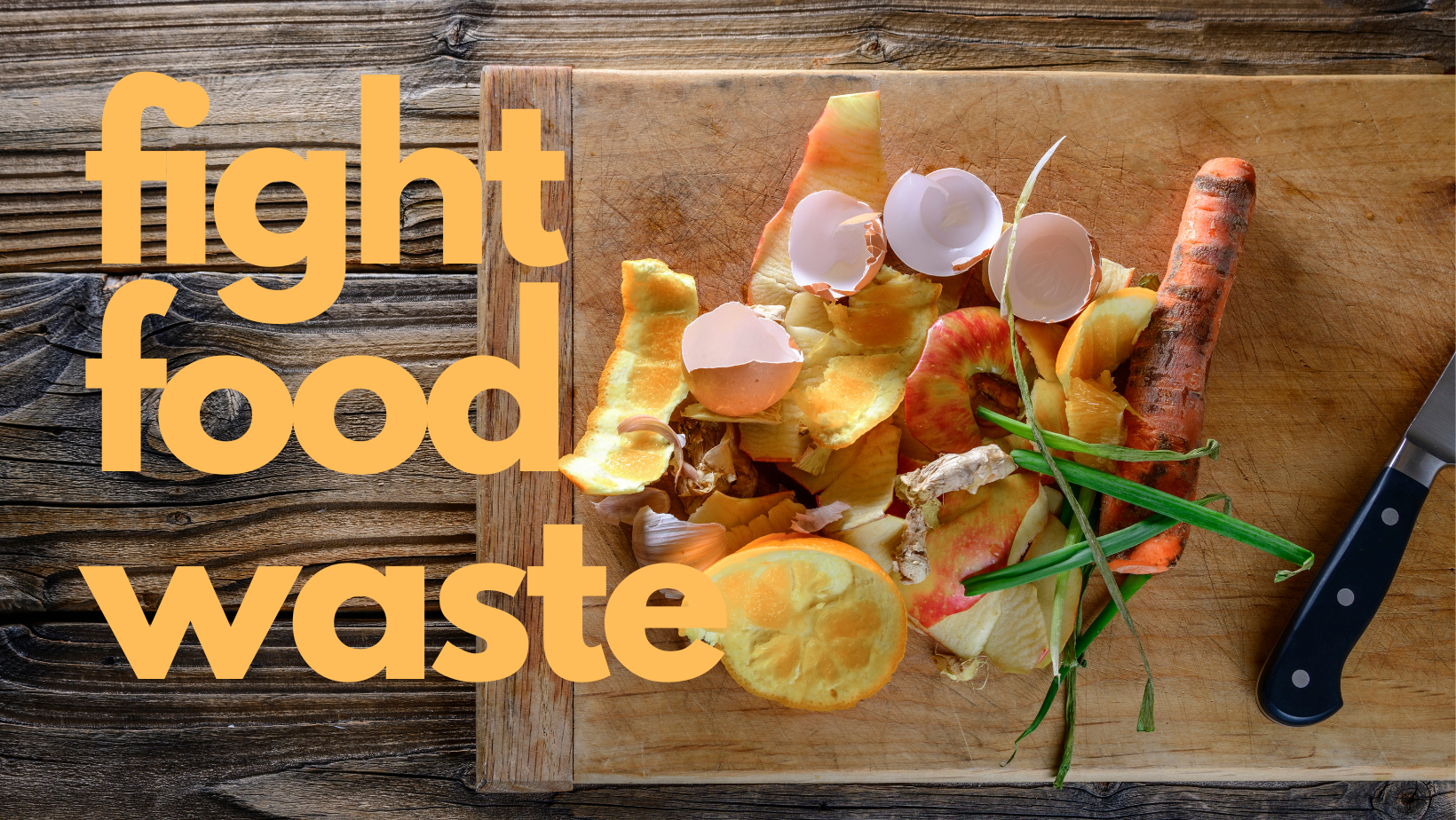
Reduce your restaurant’s food waste
Restaurant food waste is broken down into pre-consumer and post-consumer waste. Pre-consumer food waste is anything thrown away before food is served to guests. This could include items like spoiled food that wasn’t used or byproducts from the prep process. Post-consumer food waste includes the food scraps guests leave behind.
While food waste may not seem harmful to the environment, decaying fruits and vegetables emit methane, a major greenhouse gas. This is especially alarming since 40% of all food in the United States goes uneaten.
To reduce your amount of food waste, follow these tips:
-
Avoid ordering more produce than you need. Even if your supplier is offering a great deal on bulk produce, don’t do it unless you think you’ll use it. This will help prevent tossing rotten fruits and vegetables in the trash before it is ever used.
-
Order bulk items with a stable shelf life: Ordering products that have a longer shelf life in high quantities requires less packaging, creating less waste.
-
Use day-of-the-week stickers: Place stickers on items after you buy or prepare them so you know when they’re close to their expiration date. Also, rotate items nearing expiration to the front of the fridge, so they’re used first.
-
Make use of every part of your ingredients: Instead of sending vegetable scraps into the trash, use them to make juices, smoothies, soups, and sauces. Use leftover animal parts to make stock, sauces, soups, and gravies.
-
Offer guests take-out containers: The average guest leaves 17% of their meal on their plate, and to your restaurant, that means more food waste to toss in the trash. Instead, encourage your guests to take their remaining food with them by offering eco-friendly (ie, not styrofoam) boxes. Make sure your wait staff offers boxes to every customer, so it becomes a habit, both for your staff and your guests. The more customers take their leftovers with them, the less trash you’ll need to get hauled off. Make sure your containers are eco-friendly, and educate your customers about how they can recycle at home.

Invest in recyclable to-go packaging
Many state and local governments have already passed legislation limiting the use of styrofoam packaging, which doesn’t naturally degrade and is therefore filling the world’s landfills. Accordingly, a variety of more eco-friendly food containers are available for just about every dish you can think of, designed to retain heat, maintain durability, and deliver fresh food to customers without sacrificing the quality of the experience.
There are 4 different types of sustainable packaging.
-
Compostable: Compostable materials break down quickly when disposed of properly, either in a commercial or home compost, naturally becoming nutrient-rich materials that can be used in soil to encourage plant growth. Containers made with sugarcane/bagasse, bamboo, and some bioplastics are typically compostable.
-
Biodegradable: Products like bioplastics and other materials made from plants (i.e., not fossil fuels) are biodegradable, meaning they will naturally disintegrate over time by biological means (bacteria and fungi).
-
Recycled: Packaging made with materials that have existed previously and are often recyclable themselves cuts back on the need to create new materials. Though kraft paper products are made with virgin fibers, they are renewable, recyclable, and easily customizable.
-
Reusable: Products that are able to be used again after their initial use, like sturdy plastic containers, reusable coffee cups, or customizable totes, are great ways to cut back on your restaurant’s carbon footprint.
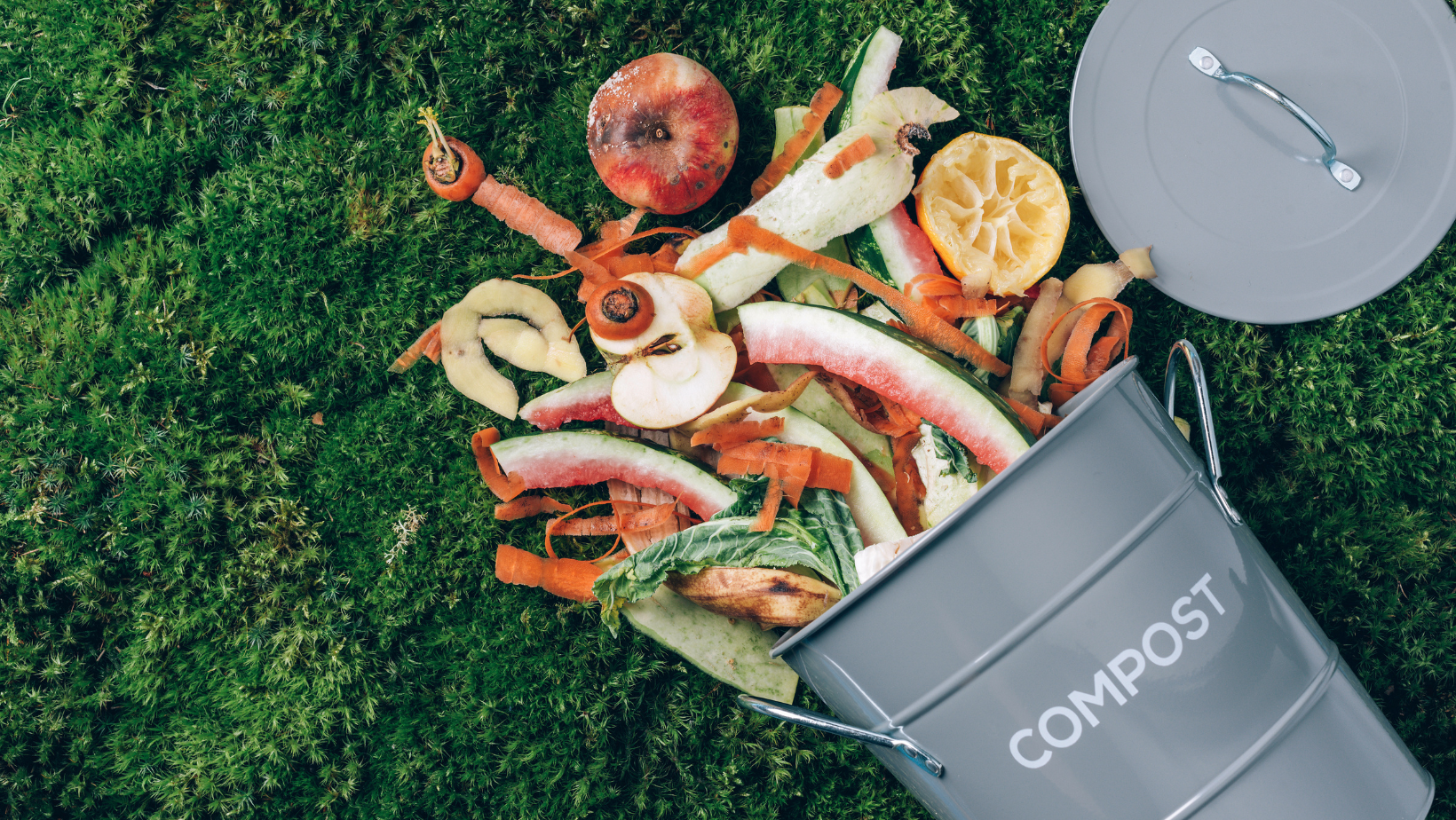
Start Composting
Composting and recycling go hand-in-hand when it comes to reducing restaurant waste. Organic waste is a valuable resource that can be composted to produce soil fertilizers that enhance soil quality and reduce soil erosion. By choosing to separate organics for composting, you can divert more waste from landfills, lower your waste-hauling costs, and make a positive impact on the environment.
What You Can Compost:
-
Food scraps
-
Fruit & vegetable waste
-
Coffee grinds & filters
-
Tea bags
-
Compostable plates, cutlery & take-out containers
-
Cardboard sleeves from hot beverage cups
-
Paper towels & napkins
What You Can’t Compost:
-
Oil, fat, and grease
-
Toxic materials
-
Coffee cups
-
Glossy or coated paper
-
Sticky labels on fruits & vegetables
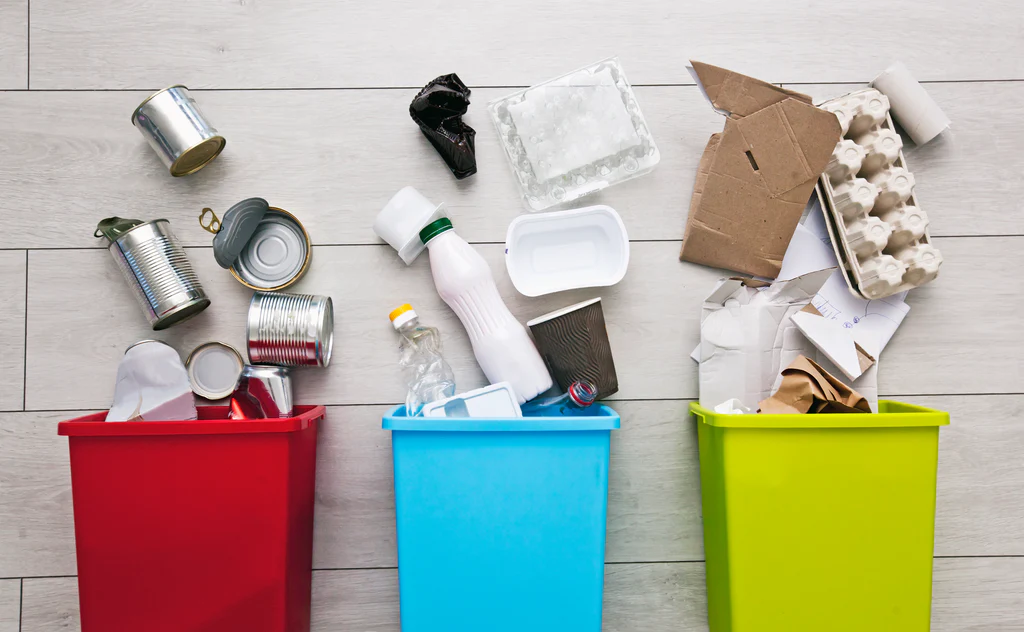
Make Bins Work
Recycling bin design and location are crucial to any restaurant recycling program. Determine the number of collection points, how many streams you will be collecting, and how many units you need throughout your facility before you order your bins.
Bin graphics are one of the most important components of a good recycling program. So once you have your bins in place, create recycling bin graphics that your patrons can easily decipher. Graphics that stand out and clearly communicate what goes into which bin are critical. If your graphics are confusing, you run the risk of mixing up your customers and mixing up your recyclables.
Remember your customers only have about 2 seconds to decide what to do when disposing of their waste. If graphics are unclear about what goes where it leads to confusion and high levels of contamination.
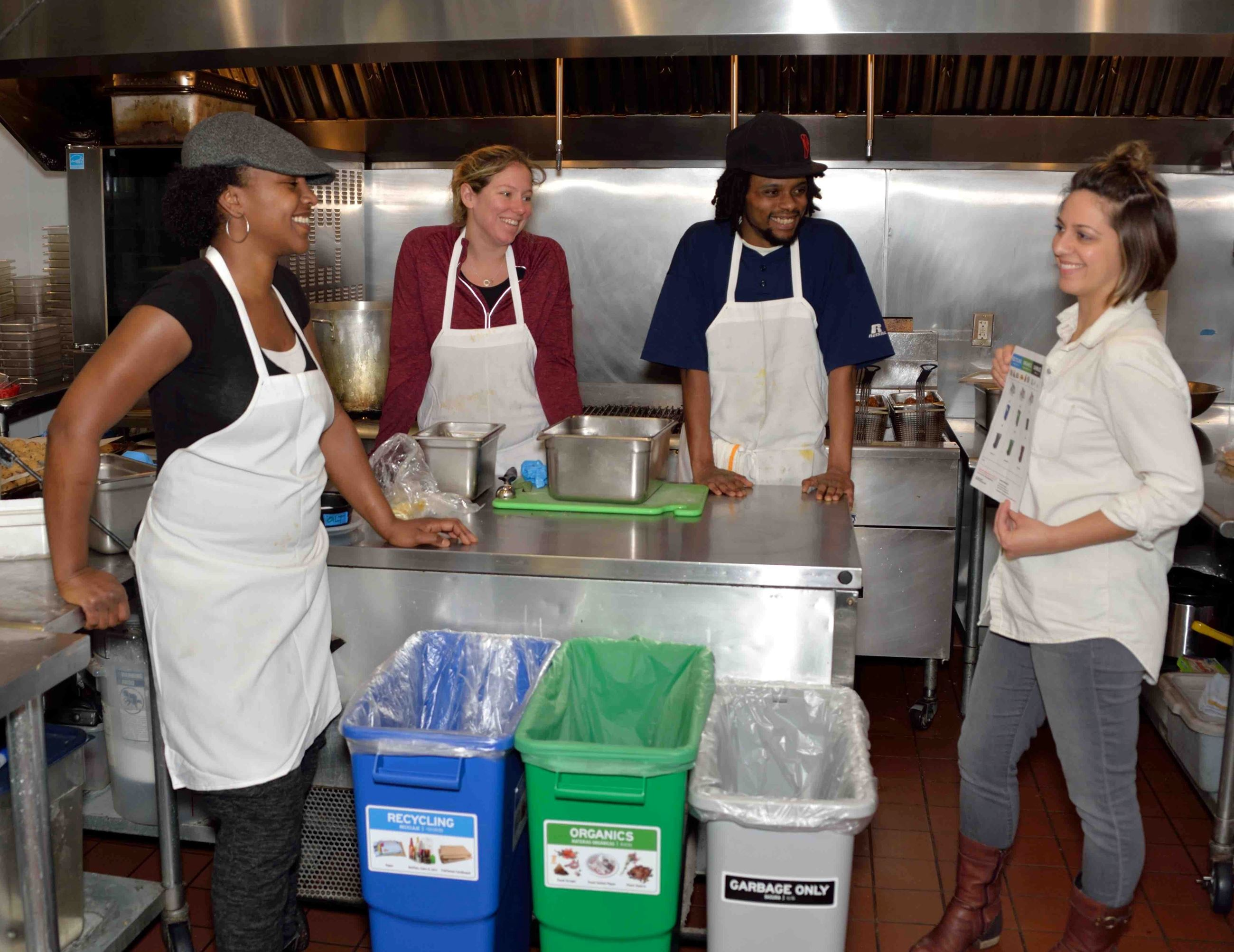
Get Your Crew On Board
Hold a training session with each group, making sure they understand the importance of properly separating waste and how to identify which bins are used for what items. Give your recycling ambassadors the responsibility of being in charge of communicating the benefits of the program to staff, so they have a clear understanding of why it’s being implemented.
Offer rewards and incentives once the program has started to encourage effective recycling practices. Ask your ambassadors to help create flyers and posters for the back-of-house areas, in employee break rooms, and around passes to remind everyone to keep up with the program and to establish clear guidelines for the various recycling streams.
Include your recycling program in the employee handbook, so it is part of your onboarding program. Your recycling ambassadors should also be responsible for measuring, reporting, and celebrating wins with the staff. And be sure to compensate your team leaders for their hard work.
Elect Recycling Ambassadors
Boost morale and hype your recycling program by electing a team ambassador to lead your recycling program. Choose an. enthusiastic employee to act as an advocate, communicate with the staff and help with onboarding. Employee engagement is key to any recycling program’s success. If possible, elect two recycling champions, one from the BOH and one for the FOH.

Make it Fun
To encourage enthusiasm and participation, hold a recycling contest between the front and back of house. Create a system of measuring your waste management progress and award the winning team with a post-shift party.
Take Away
Whether you’ve been recycling for years or are just introducing a recycling program,, when you stop disposing of your income into the trash bin, you’ll be putting a green foot forward in creating a cleaner environment, reducing your carbon footprint, and boosting your bottom line.

By Eileen Strauss
